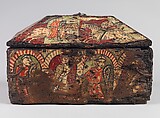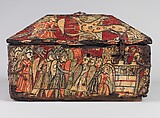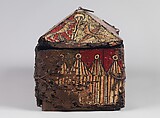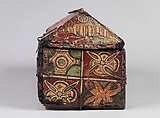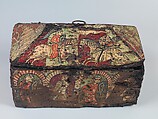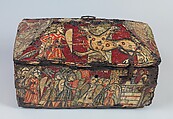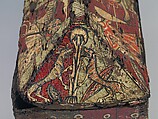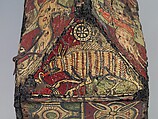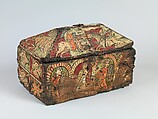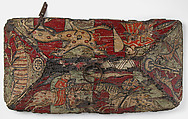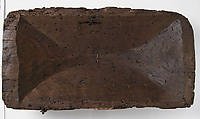On loan to The Met The Met accepts temporary loans of art both for short-term exhibitions and for long-term display in its galleries.
Coffret with the Legend of Guilhem, count of Toulouse
Las hazañas de Guillermo, un intrépido guerrero cristiano inmortalizado en un cantar de gesta en francés antiguo, inspiraron las pinturas de esta excepcional pieza. Guillermo, cautivado por los relatos sobre una hermosa reina que residía en la ciudad de Orange, gobernada por los sarracenos (musulmanes), se infiltró en la villa y fue apresado por sus autoridades. En este flanco de la arqueta, los compañeros de Guillermo acuden a su rescate. Aunque el protagonista fue una figura histórica —un conde de Tolosa que vivió en el siglo VIII—, el asedio de Orange es pura ficción y las representaciones de la batalla entre cristianos y musulmanes, repletas de estereotipos, exaltan a un héroe legendario sin retratar la realidad histórica.
En este flanco de la arqueta, los soldados recorren un pasaje secreto bordeado por arcos con dovelas en dos colores que recuerdan a las estructuras icónicas de la arquitectura de al-Ándalus, tal vez un recurso visual para representar una ciudad islámica. En la tapa de la arqueta, Guillermo, con piel blanca, lucha contra Aragón, un príncipe musulmán, cuya piel es gris. En el siglo XIII los artistas españoles y franceses ya usaban rasgos físicos como el tono de la piel para indicar las diferencias religiosas y culturales.
The exploits of Guilhem, a daring Christian warrior immortalized in Old French epic poetry, inspired the paintings on this rare box. Enticed by tales of a beautiful queen living in the "Saracen" (Muslim)-held city of Orange, Guilhem infiltrated the city only to be imprisoned by its overlords. This side of the box shows the protagonist’s companions coming to his rescue. Though Guilhem was a historical figure—an eighth-century count of Toulouse—the siege of Orange was pure fiction, and its representations of Christian-Muslim battle, replete with stereotypes, exalt a legendary hero without portraying historical reality.
This side of the box shows soldiers navigating a secret passage framed by striped arches that recall the iconic structures of tenth-century al-Andalus, perhaps serving as a visual shorthand for the representation of an Islamic city. On the box’s lid Guilhem, shown with white skin, battles Aragon, a Muslim prince, whose skin is gray. By the thirteenth century Spanish and French artists had begun using physical features such as skin tone to indicate religious and cultural differences.
Due to rights restrictions, this image cannot be enlarged, viewed at full screen, or downloaded.
This artwork is meant to be viewed from right to left. Scroll left to view more.


